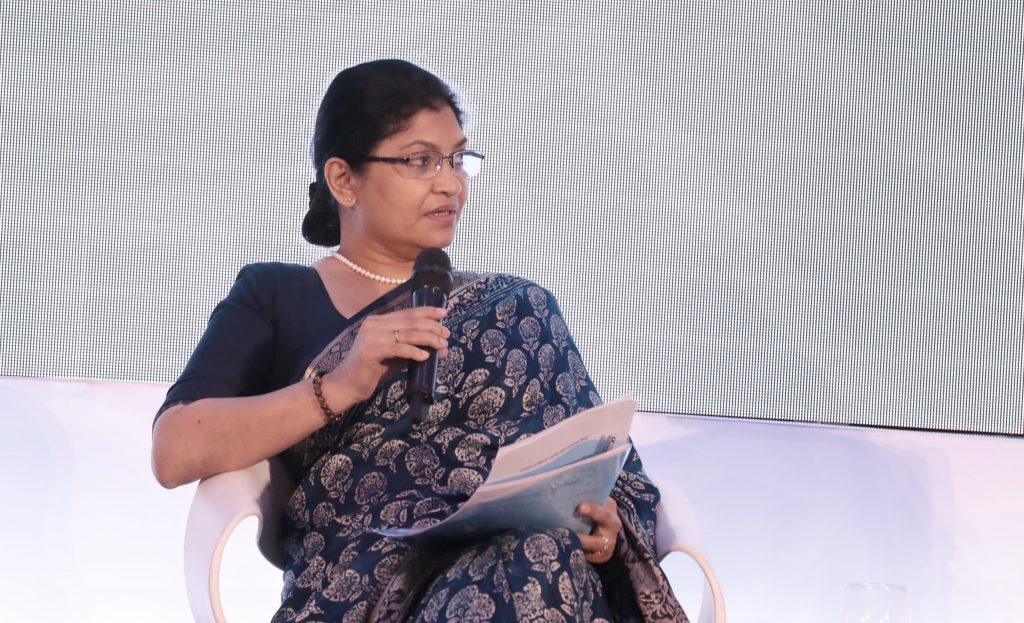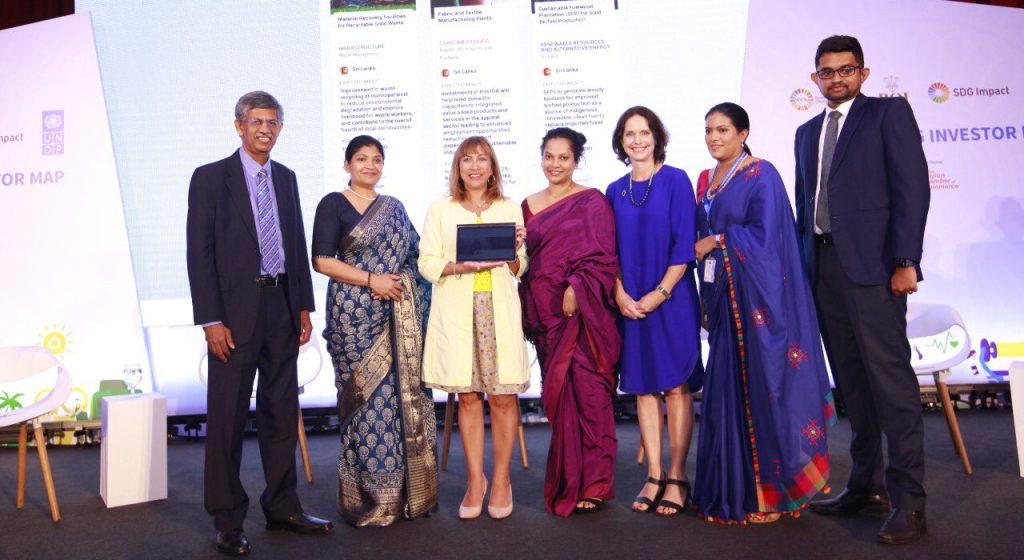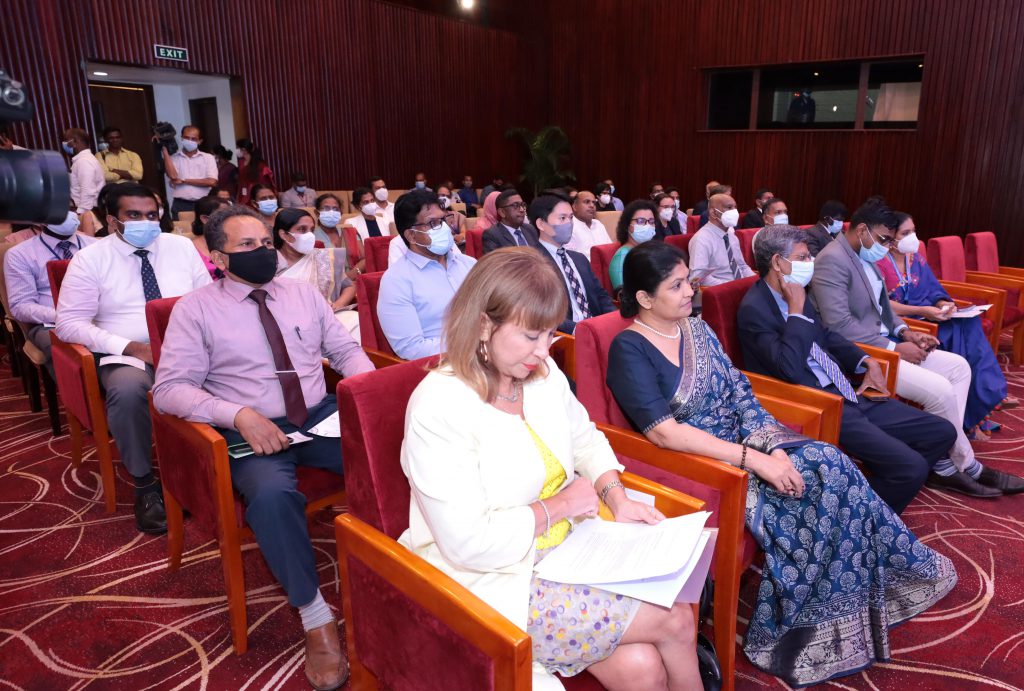BOI teams up with UNDP in launching SDG Investor Map in Sri Lanka



The Board of Investment (BOI), the apex agency for investment promotion, takes another step of ease of doing business in collaboration with the UNDP, Sustainable Development Council of Sri Lanka & SDG Impact in launching the Sri Lanka SDG Investor map.
The official launch was held on Tuesday (30) at the BMICH under the aegis of Resident Coordinator of UN Sri Lanka Singer Hanaa and with the participation of distinguished dignitaries.
Speaking at the event, Singer Hanaa who graced the occasion as the Chief Guest noted the importance of guiding private capital toward Sri Lanka’s recovery. The pandemic and economic shocks reversed efforts of achieving the 2030 Agenda, requiring massive efforts for long-term sustainable development from the Government, development partners & CSOs.
Meanwhile, BOI Director General Renuka M Weerakone expressed her views “as the focal agency, BOI plays an integral role in attracting foreign investments. Thus, Sri Lanka needs an infusion of new capital through private investments including those outside the western province an increase in economic gains through diverse opportunities.
What is an SDG Investor Map?
The SDG Investor Map is a market intelligence tool that helps the private sector identify investment themes in emerging markets. The map provides insight and tools needed by the private sector such as market opportunities, return on investment, potential sustainability benefits, and relevant risks to increase their investments towards the SDGs.
The map can make a significant contribution to bridging the development financing gap by mobilizing private capital for Sri Lanka’s recovery and SDG acceleration.
Undertaking this exercise would be crucial, especially for post-pandemic recovery efforts.
How does the SDG Investor Map add value?
- Provides investors with country-level market intelligence, backed by actionable data, on investment opportunities where SDG needs and market opportunities intersect.
Provides the insight and tools needed to increase their investments towards the SDGs.
- Helps private investors (funds, financiers, corporations), who want to increase SDG-related impacts of their investments, to identify bankable investment opportunities and business models that advance the SDGs.
Helps businesses and enterprises align their business models with impact including information on possible outcome and impact risks.
Helps the private sector add a strong gender, marginalization and climate lens to business models and Investment Opportunity Areas.
Helps mobilize new and additional financial resources to realize the SDGs including opportunities for blended financing initiatives.
Positions the country at the forefront of innovative finance-facilitation for development. Creates new avenues for South-South Cooperation between countries that have SDG Investor Maps.
Key Investment Opportunity Areas mapped to priority sectors
Renewable Energy
- Grid-connected solar power generation
- Grid-connected wind power generation
- Sustainable Fuelwood Plantation (SFP) for solid biofuel production
- Biomass terminals/depots for solid biomass fuel (Biofuel) production, primarily based on Sustainable Fuelwood Plantations (SFPs).
- Deployment of improved biomass energy technologies for thermal energy applications in MSMEs and institutions.
- Deployment of solid biofuel fired Improved Cook Stoves (ICSs) in the domestic sector.
Food and Beverages
- Input side digital platforms to serve farmers
- Development of smart systems to improve knowledge and accessibility for laboratories to improve food products.
- Cold chain storage for agriculture
- Development of sustainable commercial-scale aquaculture
Infrastructure
- Material recovery facilities for recyclable solid waste
- Solid waste management through deployment of decentralized biogas systems with energy applications
Healthcare
- Manufacturing of pharmaceuticals
- Healthcare professional training academy
Consumer Goods
Development of fabric and textile manufacturing
High level insights from the Sri Lanka SDG Investor Map
- 53% of the 10As require funding over USD 1 million
- This includes the majority of 10As under Renewable Energy and some under Healthcare, Food and Beverage, and Consumer Goods.
The investment time frame for IOAS
- 66% of 10As have a gestation period of 5 to 10 years, i.e. medium-term.
- 33% of 10As that cover sectors such as Healthcare, Infrastructure, Food and Beverage, and Consumers Goods have a short-term gestation period while those under Renewable Energy have a medium-term investment timeframe.
IMP Classification of IOAS
- 5 10AS (including those under Healthcare, Food and Beverage and Consumer Goods) fall under Category B-Benefit Stakeholders.
- 1010As (specifically those under Infrastructure and the majority under Renewable Energy) fall under Category C-Contribute to Solutions.
Media & Publicity Department
Board of Investment of Sri Lanka
